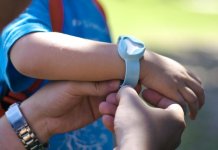
Teaching your child to tell the time could be challenging. With the number of digital clocks produced today, some children and parents no longer see the need of knowing how to read an analog clock. But as time goes by, children would eventually need to learn. It’s not all the time that a digital clock would be lying around somewhere. But how can parents help their children learn to read time?
Here are some tips you could use to make learning the skill more fun and easier to do.
Make sure that your child knows how to count
The clock is full of numbers and if your child has no background of counting, then it would be a lot more difficult for them to know the time let alone understand the logic behind it. Usually, after kindergarten, children have a sense of counting until 20 or even 30. They also learn the basics of skip counting. To make telling time a lot easier, make sure that your child’s knowledge of numbers exceeds 30 or at least goes until 60.
If your child already knows this, start introducing skip counting by 5’s and the multiplication table of 5. This way, they would understand that the intervals of the numbers in the clock are 5 minutes. If you teach them multiplication, then they would know how to quickly tell if the long hand is pointed at a specific number on the clock. For example, the long hand is pointed at 7 and the shorthand is pointed at somewhere past 3. If your child already knows to skip counting, it would be easier for them to say that it is 3:35 by multiplying 5 and 7 to get the actual minutes.
Use a large clock where you can move the hands
Now it’s time to practice. First, get a clock that has no batteries in it so you can move the hands around. When you do this, explain to your child how the movement of the clock goes. Also mention that for the shorthand, even if it isn’t pointed directly at a number, say, 4, it does not mean that it is already at 5. As long as the shorthand hasn’t pointed right in the middle of 5, it is not 5 o’clock yet. Once your child understands the movement of the clock, you can now practice adjusting the hands.
 To make it more fun, you can ask your child to make a clock for himself/herself. All you need is a paper plate and some crayons and pens. Cut out a shorthand and a long hand and pin them to the middle of the paper plate. Write numbers big enough to see and write them evenly around the plate. For reading hours to be easier, color each number’s space. Do this for all 12 numbers so that it would be less difficult to make a distinction among the hours.
To make it more fun, you can ask your child to make a clock for himself/herself. All you need is a paper plate and some crayons and pens. Cut out a shorthand and a long hand and pin them to the middle of the paper plate. Write numbers big enough to see and write them evenly around the plate. For reading hours to be easier, color each number’s space. Do this for all 12 numbers so that it would be less difficult to make a distinction among the hours.
Attach activities to certain times
To make your child more familiar with the different times of the day, you can associate certain times to your child’s activities. For example, your child wakes up at 7 AM on a school day. You can teach them to read ‘7 AM’ on the clock by telling them that this is when they usually wake up. Example activities that you can attach to telling time are: what time the school bus arrives, the start of their first class, recess, dismissal time, and sleeping time. You can also ask them to make a list of what they usually do (this can be helpful during the summer to keep your kids from being idle) and plot them on the clock.
And to top it all off, you can start quizzing your child about the time in the clock. You can make them more motivated by giving a reward when they tell the time correctly. And even if there will be times they will get it wrong, don’t ever stop teaching them. If you motivate them well enough, they will surely be able to learn to tell the time. Help get your kid telling the time perfectly, with our article on the best watches for kids.











